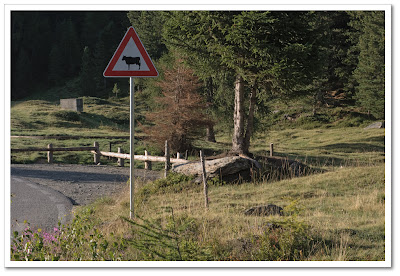Notes on "The New Topographics" exhibit in Linz (Austria)
Just to start I cannot praise more the LandesMuseum for the bold initiative, the popular price (the lowest I’ve seen in several years) and wish them a good success even if, as you may recall from the previous post the outcome is not totally guaranteed.
Unfortunately due to my total lack of comprehension of the German language, the only available option in the exhibit, I could not read the rather long intro. I have no idea, neither I've found the option, if what I’ve seen is exactly as it was and what may have changed either in number either in quality of the prints. A man altered exhibit ? It’s reasonable to think that in so many years some prints have been replaced or sold or whatever. Given that the value of the exhibit is mainly historical I think that a couple of notes about the criteria of conservation and composition where due (in English too as an integral part of the exhibit instead of those, dusty museum like, display cabinets).
The media form of the exhibit allows for differences in size and in sequence otherwise conformed in the rigid book format. That sheds a slightly different light on each separate work. Joe Deal’s wide views acquire readability in the subtle composition and careful positioning of the elements in the landscape, remembered me that Paul Klee affirmed that “trees are the actors of the landscape” where I would add: pylons of various use.
Shott’s route 66 Motels series displays the photographer’s intentions. In actual landscape photography I think that compulsion is a required conceptual gadget.
Instead I’ve found that Robert Adam’s work is better rendered in the book (think that it is his ideal media), at first his pictures are a bit disappointing. I was expecting a larger size and a better readability to fully appreciate his Ansel Adamesque well tempered b&w, but at a closer look, and after a change in glasses, the glorious distribution of silver was there in its, rather small, beauty.
An then there is the clear feeling of the times being and passed, something that makes the exhibit look as the Velociraptor of photography, partly bird partly dinosaur. Partly in the “Epater le bourgeois” side, partly looking for a wage in the photographic industry, albeit as “Artists” ending up in choosing to lock up themselves in the less than ideal, for the circulation of ideas, world of the art collectors. Internet is a pivotal point in this regard as I have already written.
To be continued ...
Trainscapes
Italiano / Italian
Note sulla mostra "The New Topographics"
Per iniziare non posso che ringraziare il LandesMuseen per l'iniziativa coraggiosa, il prezzo, 6 EURO, il più basso degli ultimi anni. Auguro loro un buon successo anche se, come dal post precedente, il risultato non è del tutto garantito.
Sfortunatamente la mia totale ignoranza del Tedesco mi ha impedito di leggere la relativamente lunga introduzione. Non ho alcuna idea, e nemmeno ne ho avuto l'opportunità, che quanto ho visto corrisponda in qualche modo a come fosse in orgine (1975) e di cosa possa essere cambiato sia nel numero sia nella qualità delle stampe. E' ragionevole pensare che in così tanto tempo alcune stampe siano state cambiate o vendute o altro. Considerando che il valore della mostra è eminentemente storico credo che qualche nota in proposito alla conservazione e composizione fosse dovuta (in Inglese come parte integrante invece delle teche polverosamente museali).
La forma mediatica della mostra permette differenze in dimensione e sequenza altrimenti omologate (appiatite) dalla forma Libro. Questo getta una luce leggermente diversa su ciascun corpus fotografico separato. Le larghe visioni di Joe Deal acquistano in leggibilità nella sottile composizione e accuraro posizionamento degli elementi nel paesaggio raffigurato, mi hanno ricordato che Paul Klee ha affermato che gli alberi sono gli attori del paesaggio, cui aggiungerei i piloni di uso vario.
La serie dei Motel sulla Route 66 di Shott mostra le intenzioni del fotografo. Nel paesaggio contemporaneo la compulsione risulta essere un gadget indispensabile.
Al contrario trovo che il lavoro di Robert Adams renda meglio nel libro (penso sia il suo media ideale), sulle prime le sue immagini sono un pò deludenti. Mi aspettavo una maggiore dimensione per poter apprezzare al massimo il suo Bianco e Nero ben temperato alla Ansel Adams. Ma dopo un esame attento, ed un cambio di occhiali, la gloriosa distribuzione di argento era lì con la sua, seppur piccola, bellezza.
E poi c'è la chiara sensazione dei tempi che erano e che sono passati, qualcosa che rende la mostra simile al velociraptor della fotografia di paesaggio, in parte uccello in parte dinosauro. In parte sulla sponda dello “Epater le bourgeois” e in parte alla ricerca di una entrata dall'industria fotografica, seppur come artisti; finendo per chiudere se stessi nel meno che ideale, per la circolazione delle idee, mondo del collezionismo fotografico. L'internet svolge un ruolo di pivot a questo proposito come ho gia scritto altrove.
continua ...
















































